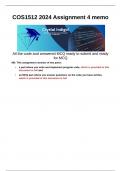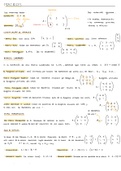Overig
COS1512 Assignment 4 memo 2024 MCQ and code
- Vak
- Instelling
COS1512 Assignment 4 memo 2024 MCQ and code NB: This assignment consists of two parts: • • a part where you write and implement program code (this part) and an MCQ part where you answer questions on the code you have written, and the material covered in this assignment. The MCQ part of t...
[Meer zien]





